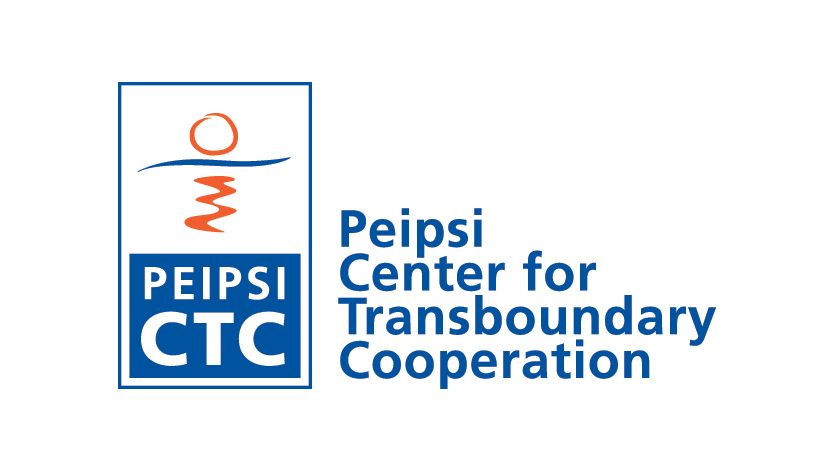Project name:
„Promoting transboundary cooperation in River Dniester management”
Project is supported by: Estonian Ministry of Foreign Affairs

Project coordinator: Margit Säre, margit@ctc.ee
Partner organisation:
Molodvas "ECO-TIRAS" International Environmental Association of River Keepers
Main aim of the project is to raise effectiveness of cross border cooperation in transboundary river Dniester management, inter territorial and – sector cooperation, also to increase public awareness about Dniester river environmental condition and –problems. Current project is building on the results of the previous Peipsi CTC projects in the region. To project main activities are:
- Seminar for environmental NGOs in Moldova
- Study visit of Moldovan, Ukrainian specialists to Estonia (Dniester Water commission members, NGOs, environmental organizations)
- Transboundary water management conference in Tartu.
- Publication on transboundary water management.
The project aims are corresponding the overall principles of Estonian Development Cooperation.
Project activities
1. Seminar on transboundary water management and NGO participation, in Moldova in cooperation of Moldovan, Ukrainina and Estonian experts; 15-16 June 2011
2. Moldovan and Ukrainian water management and environmental experts (NGOs, local municipalities) 4 days long study-visit to Estonia; 14-18 August 2011
Invitation to the summer school
3. Publication on development and cross border cooperation in transboundary water resources management; November 2011.
Read the publication:
4. Information dissemination about the project activities, Dniester area, development cooperation.
Background of Dniester River Basin
The Dniester River is a transboundary river with a length of 1362 km, which starts in the Ukrainian Carpathians, flows through Moldova and reaches Ukraine again near the Black Sea. Its area is 72100 km2 and the basin extends into the territories of 7 Oblasts of Ukraine (Lviv, Ivano-Frankivsk, Chernivtsy, Ternopil, Khmelnitsk, Vinnytsia, and Odessa), covering 13% to 80% of their areas. Within Moldova, the Dniester Basin covers the major part of country's area (59%), with its 19 districts and one territorial unit, located in the left-bank part of the Basin, being drained by the Dniester River, fully or partially. There are 62 towns and 95 townships in the Ukrainian part of the Dniester Basin, and 2 municipalities (Municipias) and 41 towns within the Moldovan part of the Basin, both on the left and right banks of the river.
The upper and lower reaches of the Dniester River flow within Ukraine over the total length of 629 km, a 225 km river section is shared between Ukraine and Moldova, and 475 km of its length lie within the borders of Moldova. Only a very small upper part of the Strviazh River (a left tributary of the Dniester) lies within the territory of Poland.
The total population of the Dniester Basin within Ukraine and Moldova is over 7 million people. Over 5 million people live in Ukraine and 2.74 million people in Moldova. The administrative centres of Ukrainian Oblasts (Lviv, Ivano-Frankivsk, Ternopil) and major industrial centres (Drohobych, Boryslav, Stryi, Kalush, Stebnik) are located in the upper part of the Dniester Basin. Major cities in the middle part of the Dniester Basin include Chisinau, Balti, Soroca, Orhei, Ribnita, Dubossary, Tiraspol, and Bendery. The Dniester is the source of drinking water for an additional 3.5 million people, living outside of the Basin area, i.e. in Chernivtsy and Odessa.
Within the Moldovan part of the Basin, the Dniester River is the source of water for the populations and industries of the following urban centres: Balti, Chisinau, Soroca, Orhei, Ribnita, Dubossary, Tiraspol, Bendery.
The Dniester is currently facing severe environmental problems due to pollution and impacts associated with the water flow regime. The environmental degradation of the Dniester River is made worse by the frozen Trans-Dniestrian conflict, which inter alia impacts negatively on the use of joint infrastructure for wastewater treatment. The problem takes on transboundary dimensions as polluted water flows into Moldova from Ukraine and thereafter back into Ukraine again and is discharged into the Black Sea south-west of the city of Odessa.
During Soviet times the water basin was managed as one system but since 1991 Moldova and Ukraine have been separately managing their respective parts. The Bilateral Agreement Between the Government of Ukraine and the Government of the Republic of Moldova regarding the Joint Use and Protection of Border Waters was signed in 1994 and a Meeting of Plenipotentiaries was instituted as a cooperative mechanism. The Agreement and its institutional mechanism is in need of revision and modernization, especially taking into account modern principles of Integrated Water Resource Management and the need to develop public participation in decision making. As both Ukraine and Moldova aim to become members of the European Union, the EU Water Framework Directive is important as a guideline for future developments.
At the same time, institutialization of modern framework for Dniester River basin management is going hard, taking into consideration weak movement of both riparian countries to reforms. NGOs play a key role in promotion of modernization.
- Article by llya Trombitsky; Eco-TIRAS, "The new water law draft and challenges of Moldova’s cooperation with countries-neighbours on transboundary waters". Prut-Dniester-art-2010-En.pdf
Read more about transboundary Dniester river basin
- http://dniester.org/
- http://dpbuvr.org.ua/
- http://www.eco-tiras.org/
Other information on development cooperation
- 22 March is World Water Day, with the main theme of 2011 “Water for cities”
International World Water Day is held annually on 22 March, to focus international attention on the importance of freshwater. The objective of World Water Day 2011 is to focus international attention on the impact of rapid urban population growth, industrialization and uncertainties caused by climate change, conflicts and natural disasters on urban water systems. This year’s theme aims to spotlight and encourage governments, organizations, communities, and individuals to actively engage in addressing also the challenges of urban water management.
Read more on World Water Day: http://www.unwater.org/worldwaterday/
- Background on integrated water resource management (IWRM) in EECCA region

